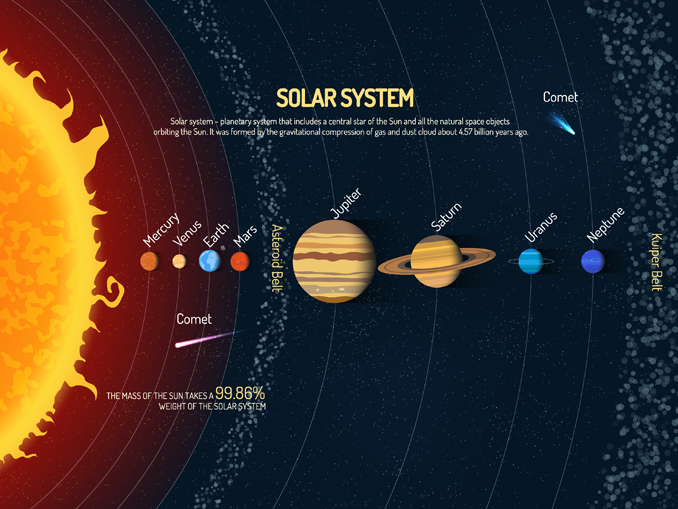Welcome to Learn to Astronomy! In this article, we will be exploring the fascinating world of our solar system. Join us as we uncover the answer to a fundamental question: “What is the name of the central star that holds our magnificent cosmic neighborhood together?” Discover the secrets of the sun and delve into its captivating mysteries. Let’s embark on an astronomical journey together!
The Solitary Sun: Unveiling the Central Star of our Solar System
The Solitary Sun: Unveiling the Central Star of our Solar System
Our beloved Sun, a solitary star nestled in the vastness of space, holds the key to unraveling the mysteries of our solar system. As the central figure of this cosmic symphony, it provides us with warmth, light, and the energy necessary for life on Earth.
The Sun’s core, a blazing inferno, is where fusion occurs, where hydrogen atoms merge to form helium, releasing an incredible amount of energy in the process. This continuous fusion reaction generates the immense heat and light that radiates from our star.
Observing the Sun using specialized telescopes and instruments is crucial in understanding its behavior and unlocking its secrets. Scientists have developed sophisticated techniques to study the Sun’s surface and atmosphere, shedding light on phenomena such as solar flares, coronal mass ejections, and sunspots.
The Sun’s activity follows an 11-year cycle, characterized by periods of increased and decreased solar activity. During solar maximum, the Sun unleashes intense bursts of energy, producing mesmerizing displays of the aurora borealis and impacting satellite communications. Conversely, during solar minimum, the Sun becomes relatively calm, and sunspots are less frequent.
Closely studying the Sun’s magnetic field is another area of research that contributes to our understanding of its behavior. The Sun’s magnetic field plays a crucial role in driving solar activity and shaping the dynamics of the entire solar system. Solar flares and coronal mass ejections result from the release of magnetic energy stored in the Sun’s atmosphere.
Furthermore, exploring the Sun’s interior structure is essential in comprehending its evolution and long-term changes. Seismic activity on the Sun’s surface, similar to earthquakes on Earth, allows scientists to probe deep into the solar core, measuring vibrations and inferring properties about its composition and dynamics.
The study of our solitary Sun goes beyond pure scientific curiosity. Understanding the Sun’s behavior is vital for predicting space weather, safeguarding our technological infrastructure, and preparing for potential solar storms that could disrupt power grids and communication systems.
The Solitary Sun, our guiding star, continues to captivate astronomers and scientists with its enigmatic nature, beckoning us to uncover its secrets. Through ongoing research and advancements in technology, we draw ever closer to comprehending the intricacies of this celestial entity and its profound influence on our solar system and life on Earth.
Alpha Centauri. What Does the Closest Stellar System Conceal?
[arve url=”https://www.youtube.com/embed/XKbQuNF0zPo”/]
Earth’s motion around the Sun, not as simple as I thought
[arve url=”https://www.youtube.com/embed/82p-DYgGFjI”/]
Frequent questions
What is the name of the central star of our solar system?
The name of the central star of our solar system is **the Sun**.
What is the scientific name for the sun, the central star of our solar system?
The scientific name for the sun, the central star of our solar system, is **Sol**.
How is the central star of our solar system commonly referred to in astronomical terms?
The central star of our solar system is commonly referred to as the **Sun** in astronomical terms.
In conclusion, we have explored the fascinating topic of the central star of our solar system. With a name that is familiar to us all, the central star is none other than the Sun. As the dominant source of light and energy in our celestial neighborhood, the Sun plays a pivotal role in sustaining life on Earth and shaping the dynamics of our solar system. Its immense mass and powerful nuclear fusion reactions make it a true powerhouse of cosmic proportions. Understanding the Sun’s characteristics, behavior, and influence is essential for studying and comprehending the complex workings of our universe. Through ongoing research and exploration, scientists continue to uncover the mysteries of this awe-inspiring celestial body, paving the way for future discoveries and advancements in our understanding of astronomy. So let us remember the name that illuminates our days and holds us in its gravitational embrace – the magnificent Sun.

